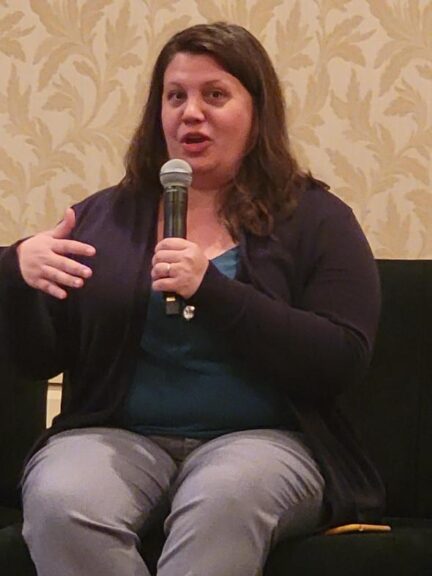Concerns Raised Over California’s Pesticide Stance
California now has a super-majority of Democrats in the state Legislature and Governor, and many working in agriculture in the state are growing concerned over the general perception that synthetic pesticides are inherently bad. In fact, organizers of the California Fresh Fruit Association’s 86th annual meeting this week in Laguna Beach were concerned enough to lead the three panel discussions of key issues: water, politics, and pesticides, with a look at the state’s mounting public and regulatory pressures regarding pesticide policies.
Caroline Silveira, Government and Industry Affairs Lead, Western Region, Corteva Agriscience, notes she has seen a definite uptick in environmental concerns in recent times in the only state to mandate its own pesticide review. The uptick is concerning because, as it stands, it takes an average of 11 years to bring a product from discovery to EPA submission, and then it might take four to five years for EPA review.
“Then in California you have to add two years (for Cal-EPA),” says Silveira, who deals with a total of 11 Western states, “and that’s if you’re doing well.”
What’s frustrating is it seems a lot of the work done by the Cal-EPA is duplicative of that done by EPA, she says.
The biggest controversy in recent times was the state ban on chlorpyrifos, a Corteva product, and it illustrates what she thinks is part of the problem. “We’re still trying to find a replacement,” she says, “and it’s interesting the state thinks they can develop an alternative to chlorpyrifos when we’ve been working on this for years.”
There is a general feeling in the state capital that perhaps Cal-EPA might want to see all pesticides – or at least all that are synthetic – go away. She’d like to see state officials be more forthcoming. “Is that what you’re working toward – all organic?” she asks rhetorically. “It seems like there are goals that are not articulated.”
To illustrate just how difficult it can be to farm in California, Silveira points to sulfoxaflor, a Corteva pesticide product marketed as Isoclast, which has been approved by EPA. “Every other state is using it, but we can’t get it through California (EPA),” she says.
Cal-EPA says their goal is safer, more sustainable pest management, she notes.
“Well, who doesn’t have that for a goal? We’ve had the same goals for far longer,” she says.
Don Cameron, whose Terranova Ranch in Helm, CA, produces 25 different crops, also serves as President of the California State Board of Food and Agriculture, so he has a good picture of what’s going on. He doesn’t sugar-coat the situation, opening his comments: “Let’s face it – we’ve got a tough job.”
Cameron says he doesn’t spend nearly as much time in the field as he used to because of the mountains of paperwork demanded by Cal-EPA. It makes it extremely tough on the smaller grower, who has to do it all, which is ironic because the state seems to favor smaller growers.
“It’s almost like if you’re big, you’re bad,” he says, “but the regulatory side is doing all they can to put them out of business.”
Besides chlorpyrifos, he notes that growers have lost fumigants such as methyl bromide, and more products are coming under pressure, such as neonicotinoids and pyrethroids. But he urges Cal-EPA to be careful.
“Please don’t take away a valuable product until we have a valid economic alternative,” he says. “We need a full toolbox, because if we keep using the same things we’ll face resistance issues.”
Cal-EPA seems to favor biopesticides over synthetic materials and is steering growers in that direction, but many growers are still not too familiar with biopesticides, Cameron says, noting that he himself doesn’t have a lot of experience with them.
Because of that, Cameron is putting together a group of growers who are going to start field trials of biopesticides separate from the work done by Cal-EPA. “We want to see what works and what doesn’t work,” he says.
Ruthann Anderson, CEO of the 4,000-strong California Association of Pest Control Advisers (CAPCA), says PCAs can certainly bring their expertise to bear, but overall there needs to be more collaboration. “We need to look for common ground in ag so we can deal with pesticides on a united basis,” she says.
Cameron seconded that notion. “We have a great story to tell, but we’re going to have to do better,” he says. “We can talk among ourselves, but we need to get our story out there. And if we don’t collaborate with people we really don’t want to work with, we will continue to have a tough time.”





















